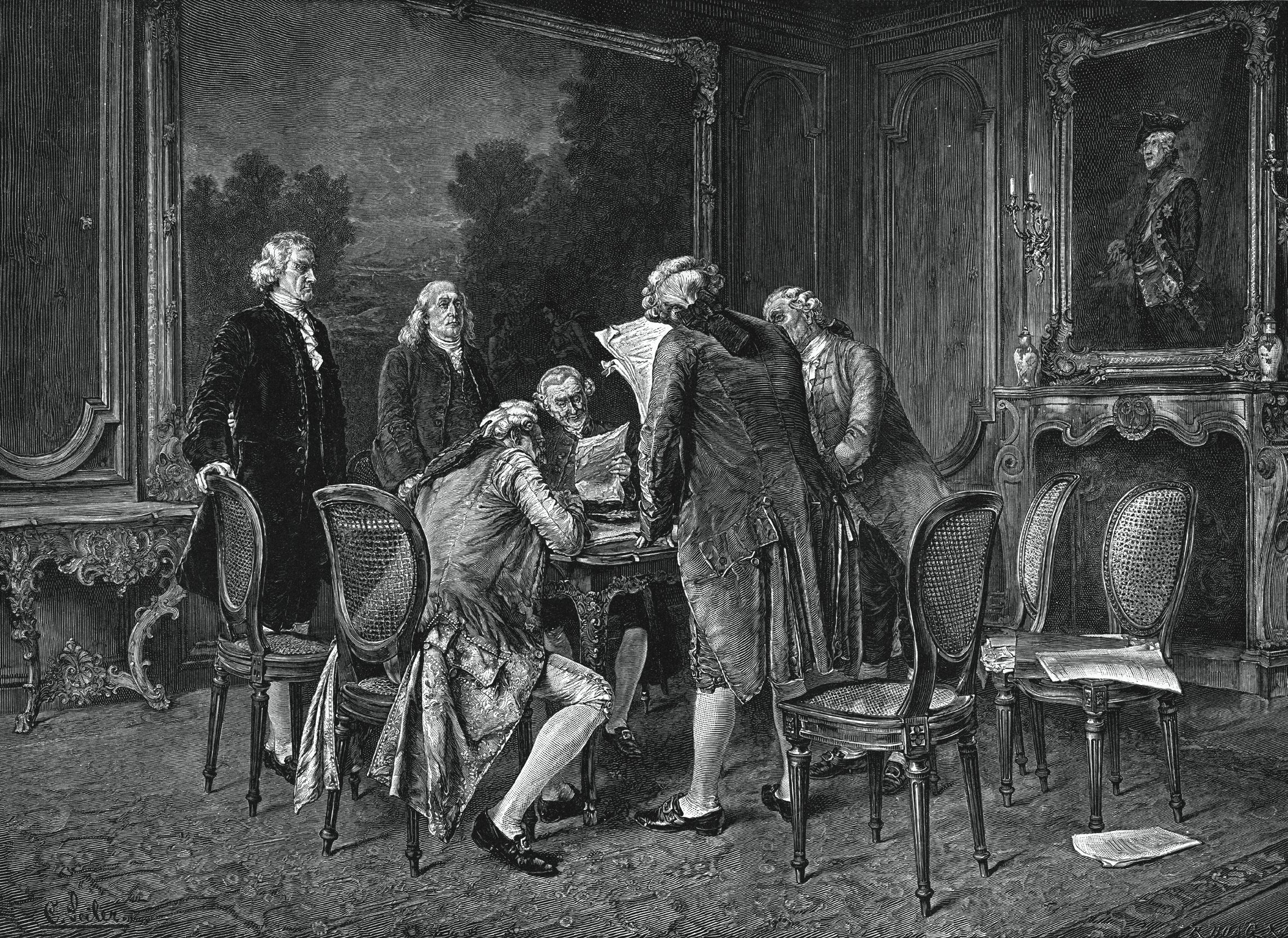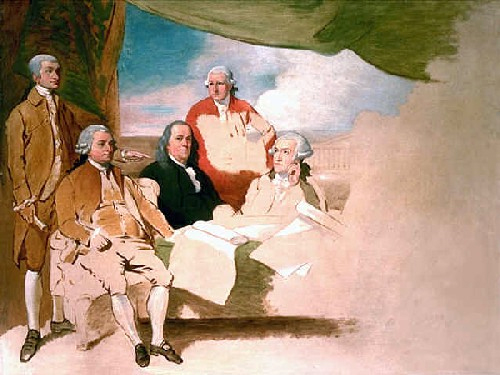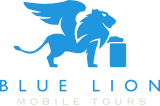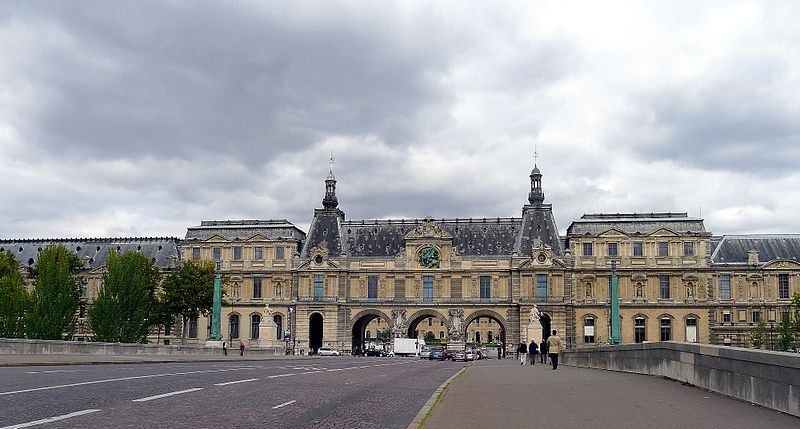
Pont du Carrousel en direction du Louvre
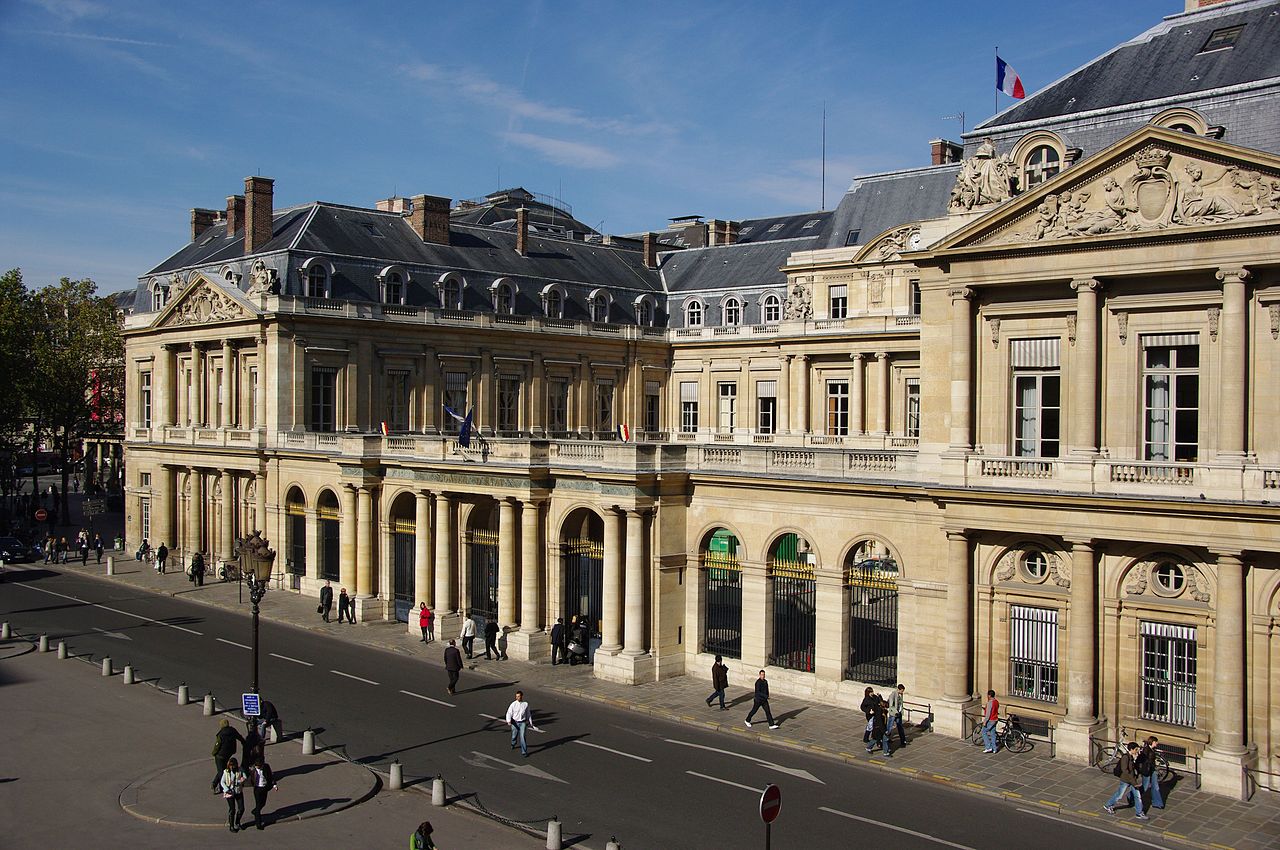
The Palais-Royal
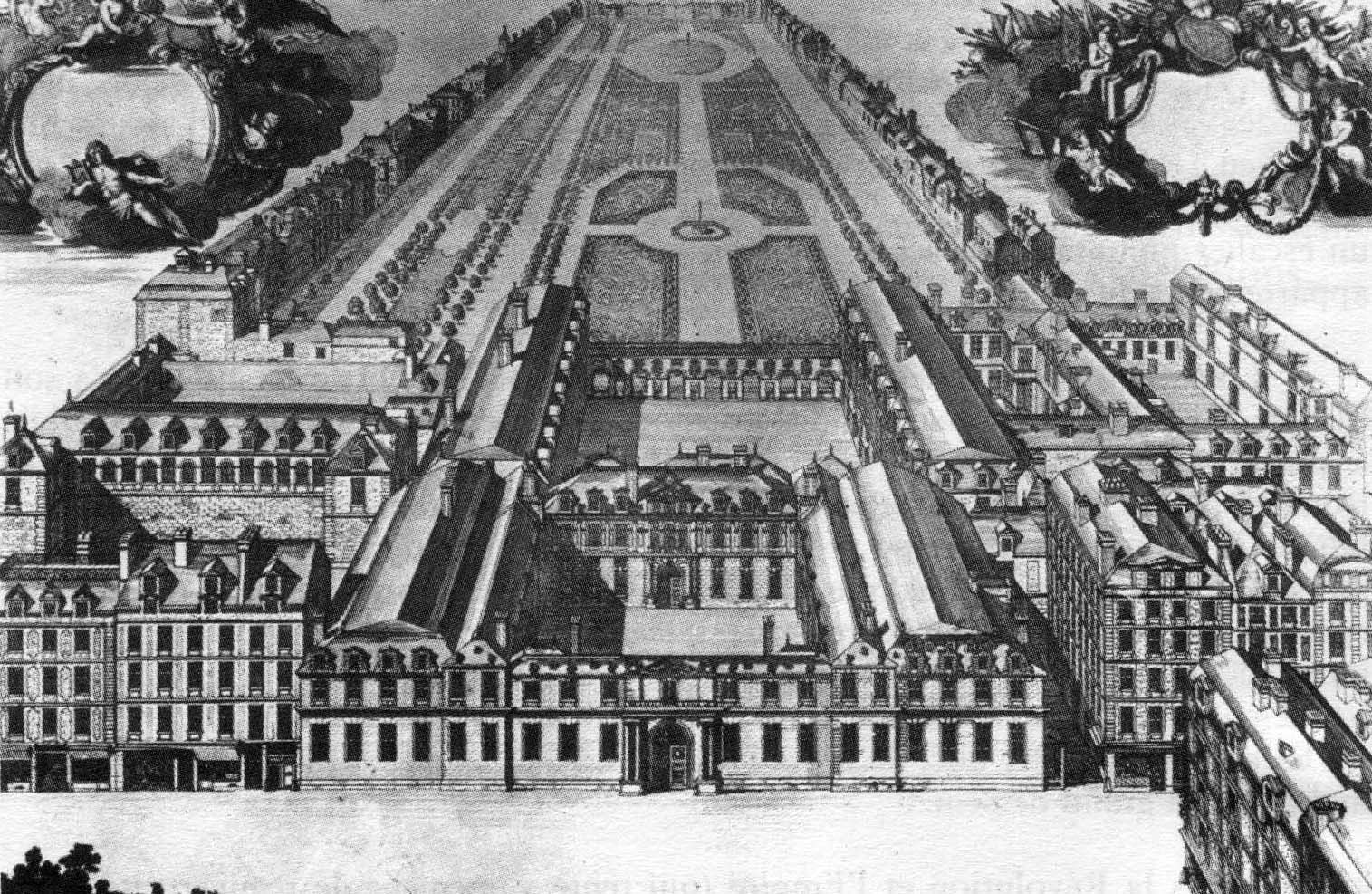
La Bossière
Le Palais-Royal, ca. 1679
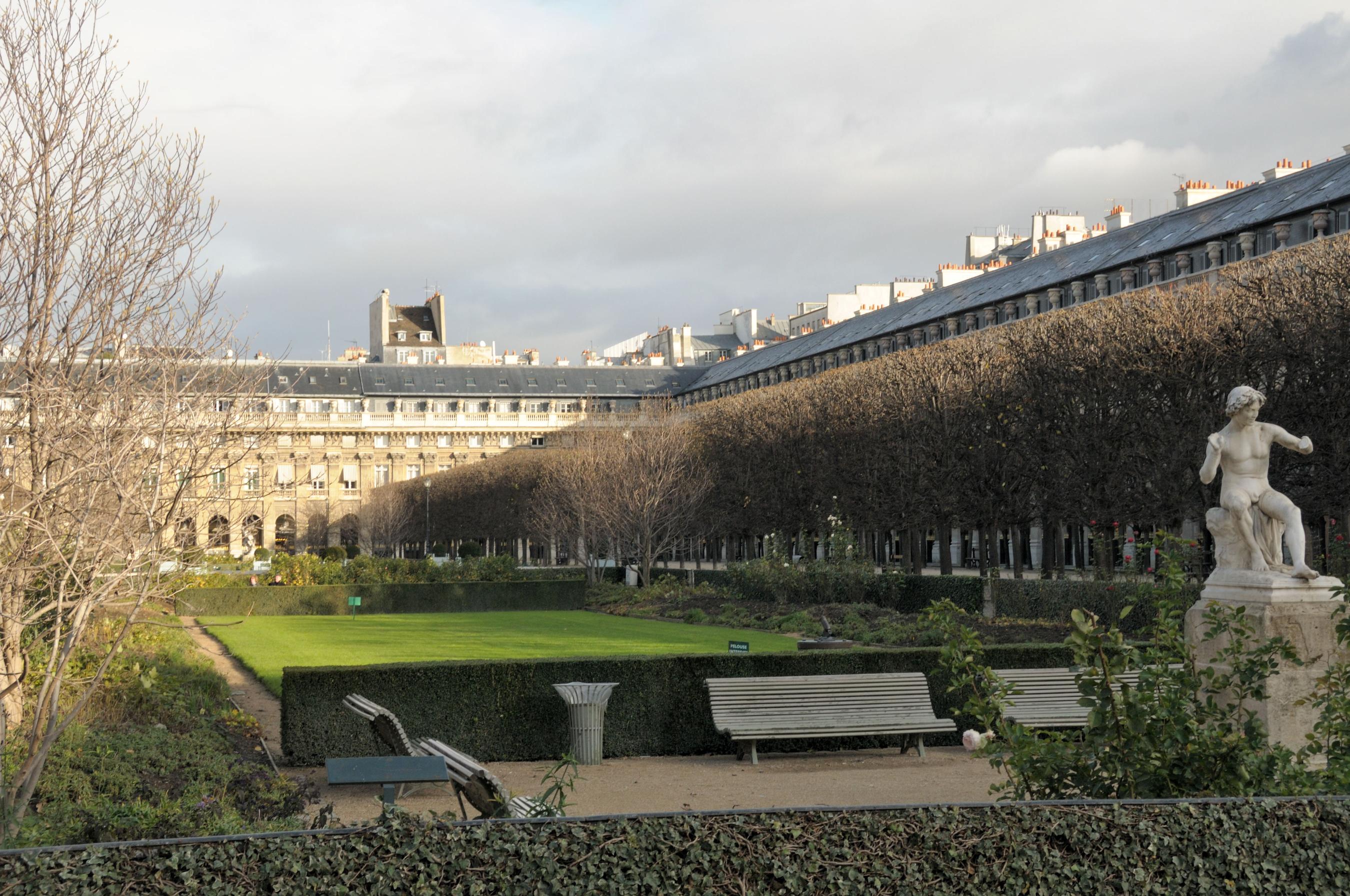
The garden of Palais-Royal
Le Pont du Carrousel
Although this Founding Fathers in Paris tour covers only the Left Bank, we're too close here to a marvel of the Right Bank not to at least point it out. If you were to cross this bridge and keep walking straight - through the Louvre courtyard, past its pyramid, across Rue de Rivoli, through Place du Palais-Royal and across Rue St-Honoré - in about 10 minutes you would come to the Palais-Royal.
In 1781, King Louis XVI's cousin Louis-Philippe d'Orléans began enhancing the palace by building the arcades and shops that still surround the site's garden. This was in effect Paris's first "shopping center," a kind of precursor to the covered commercial passages that proliferated in the 19th century, mainly in the 9th arrondissement. (The 9th was then the entertainment district, and its enclosed lanes featuring boutiques and eateries were a boon to ladies leaving theaters on rainy evenings, as they could duck into restaurants without having to muddy the hems of their long frocks.)
The garden of the Palais-Royal was also the private playground of Louis-Philippe, who became Duc d'Orléans at his father's death in 1785. The garden and its activities were a major money maker for him and he had a tacit agreement with the police, who didn't bother the garden's high-class ladies of pleasure, gamblers or philandering military officers as long as they restricted their activities to the Palais-Royal precincts. (Low-class prostitutes and common soldiers were not allowed inside.) The pact held until midnight of December 31, 1837, when gaming houses became illegal in Paris and the Palais-Royal gardens thus began losing their luster.
In the early days, however, the Palais-Royal arcades and gardens allowed Thomas Jefferson to combine two of his great pleasures: walking and spending money. He loved going there, and in his expense book recorded having bought in its shops an "ivory-handled knife & a timepiece," among other purchases. During his strolls along the western leg of the arcades, he could follow the progress of construction on the Café Corrazza (numbers 11 and 12). Although it is now a clothing store, its founding date, still visible in the beautiful signage bearing its name, sends little jolts of excitement up the spines of Founding Fathers devotees: 1787, the year the U.S. Constitution was being written, from May to September, in Independence Hall, Philadelphia - with regular updates being sent across the ocean to Ambassador Jefferson.
Jefferson was not the only Founding Father attracted to the Palais-Royal. Aaron Burr made haste to visit the place two days after his arrival in Paris. In his diary entry for February 18, 1810, he mentions the Café des Aveugles (number 103: at the far end, catty-corner to the Café Corrazza; aveugle = "blind"). This basement hangout featured four blind musicians and an overabundance of prostitutes. Here is Burr's description: "a cellar vaulted 80 or 100 sq ft. Well furnished, an orchestra of blind performers. Entry gratis. We were 4 and took beer & biscuits. 3 sous each. Ladies of all sorts. Will talk with you, sit, eat, drink, but no further solicitations unless you make overtures."
